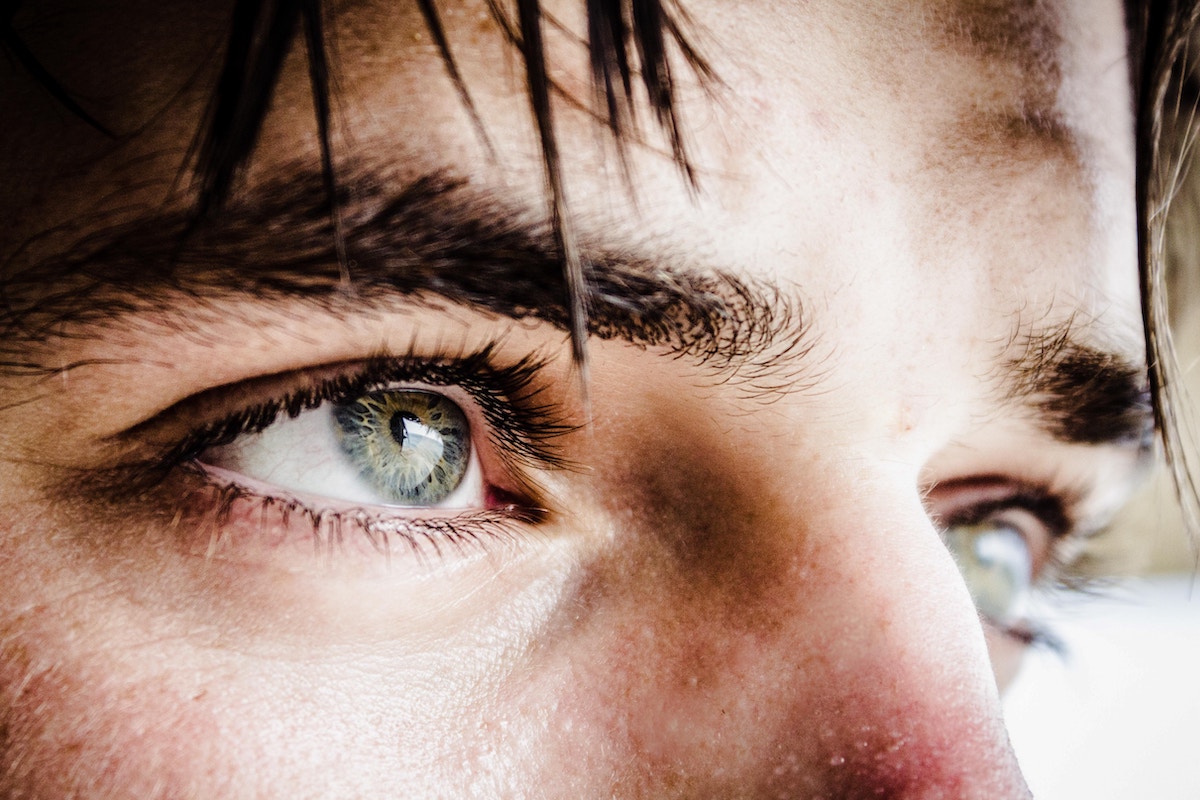
They call the eyes the window to the soul. However, bags under the eyes can be a window into something else: Aging, poor sleep habits, and medical issues.
Undereye bags are often seen as a “women’s concern” – credit solid skincare marketers for that one. However, recent data tells a different story: Eye bags were a concern of all genders in a recent survey. If you have them, you may be interested in getting rid of eye bags.
First, you’ll want to know what causes undereye bags — there are many triggers other than aging (though that is one of them). From there, you can fix under-eye puffiness, darkness, and bags. We went further than skin deep to help you ditch undereye bags from the inside out.

What causes bags under the eyes?
What causes excess bags under the eyes? Several factors can lead to the development of under-eye bags, so you’ll want to evaluate your current health and lifestyle and potentially consult a healthcare provider. Common culprits include:
- Natural aging. One of the most common causes of undereye bags (and wrinkles) is the hands of time. The skin loses firmness as we get up there in years, leading to undereye bags. Products and skincare regimens can slow this process — and we’ll get to that — but wrinkles and bags will happen to the best of us at some point.
- Allergies. Undereye puffiness is a telltale sign of allergies. Inflammation occurs as our bodies fight off allergens like pollen, dander, or ragweed. Allergies could be a trigger if you notice undereye bags seasonally or situationally, such as every spring or fall or after a walk through a flower field that seemed like a whimsical, Instagram-worthy idea at the time.
- Genetics. Undereye bags run in some families. Additionally, genetics can affect when aging signs, including bags under the eyes, begin to pop up.
- Poor sleep. Are you not catching enough Zzzs? You may be causing or exacerbating under-eye bags. Sleep duration can affect how much blood flows to the eyes. Too little sleep means reduced blood flow — and increased eye bag risk.
- Fluid retention. Speaking of fluid, retaining fluids can affect circulation and trigger eye bags. High-salt diets might be to blame for this issue.
- Smoking. Smoking can lead to a loss of collagen, which can cause the skin of the eyes to thin. Blood vessels become more visible, and you might notice increased puffiness.
- Sun exposure. Frequent sun exposure, particularly without SPF, can quicken aging around the skin, including the eyes.
- Medical issues. Under-eye bags are a side effect of some medical conditions, like those in the thyroid. A doctor can help you rule those out.
How to get rid of bags under the eyes
What can you do to tighten the skin under your eyes? Good news: Depending on the trigger, you might be able to treat under-eye bags and puffiness using at-home remedies, including lifestyle and over-the-counter treatments. Some of the fixes might feel positively blissful. Other therapies will require professional care.
- Sleep. If you ask, “What am I deficient in if I have bags under my eyes?” the answer might be sleep. The CDC recommends getting at least seven hours of sleep per night. Struggling? Tips like sticking to a bedtime routine can help you fall asleep faster and for longer.
- Sleep on your back. Sleeping on your back saves the skin around the eyes from experiencing friction from your pillowcase. Back sleeping isn’t for everyone, though. A silk pillowcase can also help.
- Reduce alcohol intake. You might think alcohol helps you sleep — consider that a myth. Alcohol can reduce sleep duration and quality. Consider ditching the nightcap.
- Stay hydrated. Drinking plenty of fluids is essential for overall health, including the skin. Fluid keeps blood flowing and can help mitigate the effects of a day of eating high-salt foods.
- Eat a low-sodium diet. Though sipping plenty of water will help, combining hydration with a low-salt diet will reduce the risk of developing undereye baggage. Craving something crunchy? Reach for a hydrating apple instead of chips and pretzels.
- Take an antihistamine. If allergies are to blame, an antihistamine can lower side effects, including under-eye puffiness.
- Ice packs. Ice packs can lower swelling, including under the eyes.
- Professional treatments. Fillers, peels, and surgical options like eyelid lifts can also nix undereye bags, though they can get pricey.
Dark circles under eyes vs. under eye bags — are they the same thing?
Technically, no. Eye bags generally refer to the swelling around the eyes. Dark circles are skin discoloration. That said, many causes — like lack of sleep and smoking – are the same—Ditto for the treatments. Getting more sleep and maintaining a healthy lifestyle, such as quitting smoking and reducing alcohol intake, can help you banish both issues (the rest of your body will thank you, too).

Summary
Under-eye bags can have several causes, including aging, allergens, genetics, and lifestyle factors like smoking and poor sleep. Some you can’t control, including genetics and, to a large extent, aging. However, you can ditch smoking, increase sleep duration, and try over-the-counter allergy medications like antihistamines. Sleeping on your back or with a silk pillowcase can also ease skin irritation around the eyes, reducing bags and puffiness in the process. A dermatologist can help you work through concerns about the skin around your eyes.
Editors' Recommendations
- What are peptides, and do you really need them in your skincare routine?
- How fast does facial hair grow, and can you speed up beard growth?
- How to get rid of dark circles under eyes once and for all
- Follow these 10 tips to get rid of razor burn ASAP
- Skincare tips: How to get rid of wrinkles, fine lines, and more






